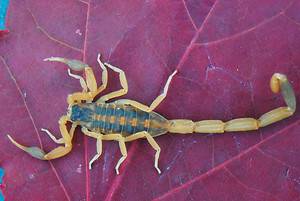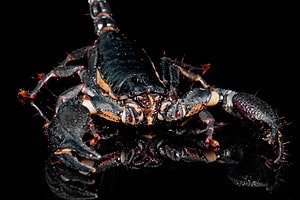Experts believe that about 90 scorpion species inhabit the United States. Now, you may look at the title and wonder how we selected three types to focus upon. Well, the 3 different types of scorpions in the United States that we’re going to explore today represent three different genera. Each genus includes many species of scorpions found in the United States and other parts of North America.
We’re going to examine these types of scorpions and tell you which species are most common within them and which ones you need to worry about the most. After all, some of these small creatures have venom so powerful that it can kill adult humans.
What Are the Most Common Different Types of Scorpions in the United States?
The three different types of scorpions in the United States that we’re going to examine include the Vaejovis, Hadrurus, and Centruroides genera. We’re going to broadly explore each genus and talk about the species that are most important to know about. By the time we’re finished, you’ll know about some of the most common and deadliest scorpions in this part of the world.
1. Centruroides, or Bark Scorpions
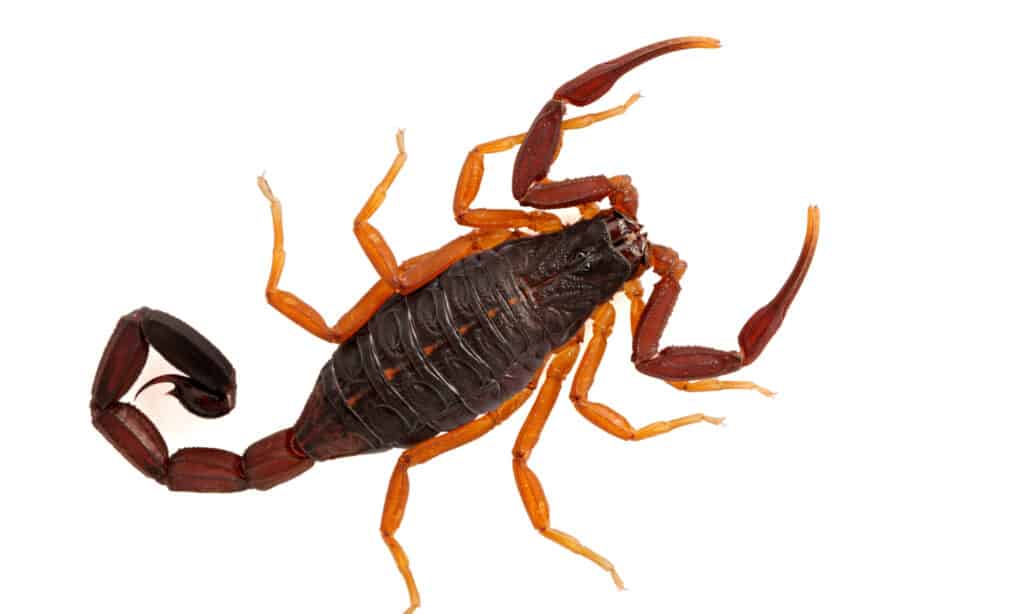
Florida bark scorpion ranges from Florida, Central America, and parts of the Caribbean and South America.
© Ernie Cooper/Shutterstock.com
The members of the Centruroides genus are some of the most dangerous different types of scorpions in the United States. The genus contains over 100 species, and several of them are considered highly venomous with stings that are medically significant and potentially fatal.
These scorpions are typically found in the southern U.S., Mexico, Central America, and some parts of South America. They’re widespread, dangerous critters.
In the U.S., they are known as bark scorpions. They don’t grow that large on average, with most species measuring between 3 and 5 inches. Like other scorpions, they are nocturnal creatures. Still, they can burrow or hide in places where humans can interact with them. Those interactions can be harmful if not fatal.
Some of the most noteworthy members of this species found in the United States are:
- Centruroides sculpturatus, also called the Arizona bark scorpion. This is the most venomous scorpion in North America. A sting from this scorpion can cause very intense pain, inability to move the body part where envenomation occurred, convulsions, vomiting, and numbness in the area of the sting. These scorpions are capable of killing humans, but it’s very rare.
- Centruroides gracilis, commonly called the Florida bark scorpion or the brown bark scorpion. These creatures are not as toxic as others in their genus, and some people keep them as pets. Nevertheless, a sting can still cause heart problems, shock, convulsion, and even death.
Unfortunately, the Arizona bark scorpions enjoy the same kind of habitat that exists in suburban areas of the Southwest. They often find their way into homes, only needing a space less than ½ inch wide to climb through.
Once inside, they tend to climb very well on walls, furniture, and even ceilings that have a rough surface. In other words, you can find them in shoes, on the underside of tables, and in dark corners of your home.
If you or someone else is stung by either of these scorpions or any that you’re uncertain about, it’s imperative to seek medical aid. Although most people don’t die as a result of scorpion stings, they can cause serious health problems and fatalities.
2. Hadrurus, or Hairy Scorpions
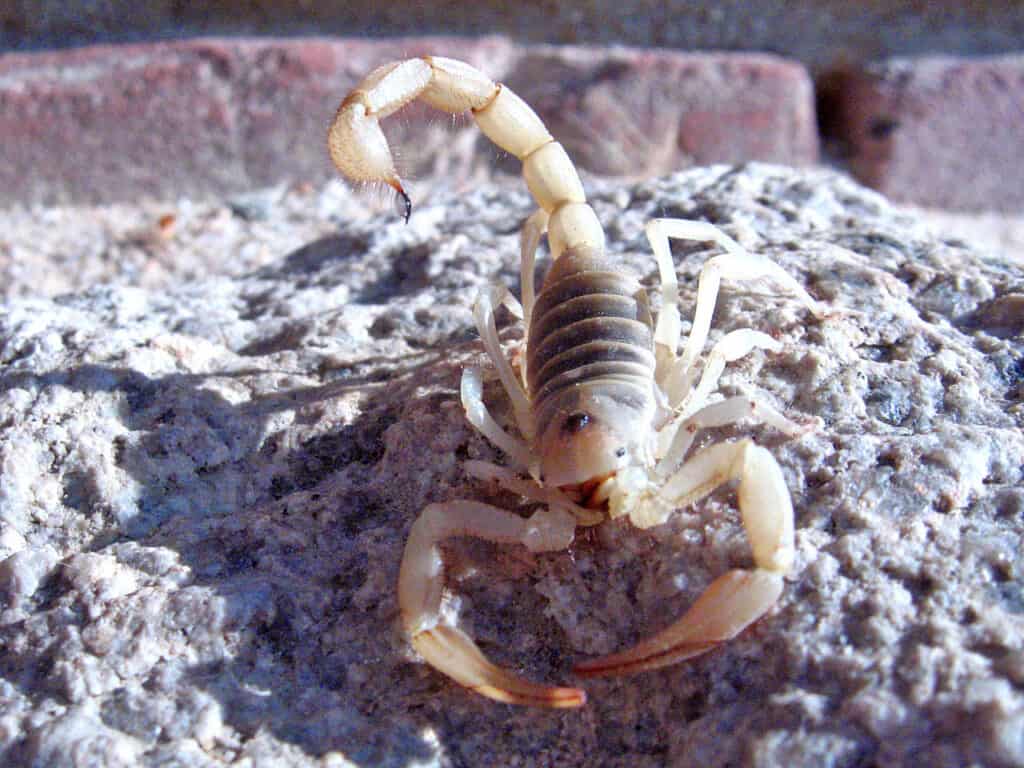
Giant hairy scorpions are some of the largest scorpions.
©Robb Hannawacker, while working for Joshua Tree National Park / CC BY 2.0 – License
The members of the Hadrurus genus are interesting because they are some of the largest species and they have sparse hairs all over their bodies. Despite the moniker “hairy scorpions”, it’s not as though they have a complete covering all over their bodies.
Seven species of this genus exist, and they are usually found in deserts of the southwestern United States and the northern parts of Mexico.
Another interesting fact about this genus is that they actually prefer to sting attackers rather than pinch them. That means if you pick a fight with these scorpions, you’re probably going to feel some serious pain. Fortunately, these scorpions do not have powerful venom. You’ll feel some pain, but you won’t have serious health problems as a result of an encounter with them.
Some of the most significant members of this genus are:
- Hadrurus arizonensis, commonly called the Arizona desert hairy scorpion. This creature can measure upward of 5.5 inches long and dig long burrows in the ground to wait out the day. Their venom can be deadly to those with allergies to it.
- Hadrurus hirsutus, also called the desert hairy scorpion.
- Hadrurus spadix, commonly known as the black-back scorpion. Delivers a painful, non-fatal sting and they grow up to 5.51 inches long.
3. Vaejovis, or Striped-Tailed Scorpions
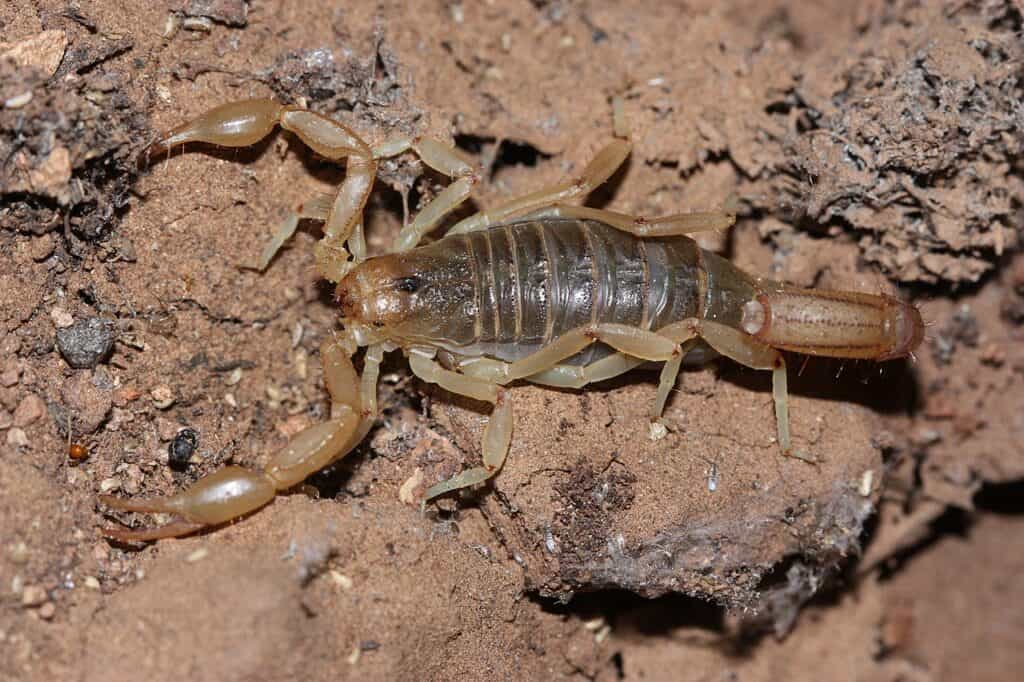
Stripe-tailed scorpions are common in the United States.
©Andrew Meeds / CC BY 4.0 – License
The Vaejovis genus has over 30 species of scorpions within its ranks. Typically, they are referred to as stripe-tailed scorpions. Some of the most common members of this genus include the Vejovis carolinianus, also known as the southern devil scorpion or the southern unstriped scorpion.
This creature is rather widespread, found most frequently in the southwest U.S. Yet, they are also prevalent in some of the eastern portions of the U.S, as far east as Mississippi, Georgia, and Kentucky. These scorpions measure only about 1.5 inches long, and they hide well in piles of debris and wood.
They can deliver a painful sting that is similar to a bee or wasp sting, but they are not known to be deadly. In fact, you should be fine unless you have an allergy to the scorpion venom delivered in its sting.
Some other common members of this genus include:
- Vaejovis brysoni, a mountain-dwelling species found in the Santa Catalina Mountains in Arizona
- Vaejovis spinigerus, also called Paravaejovis spinigerus, the stripe-tailed scorpion, or the devil scorpion that doesn’t have medically significant venom.
Thus, while the stripe-tailed scorpions are common, they are not necessarily dangerous. You should still leave them alone and not try to handle them.
We’ve broadly covered three different types of scorpions in the United States. Unless you know a fair amount about scorpions, it’s a good idea to leave them alone unless they’ve invaded your home. You don’t want to handle the wrong species and end up with a serious injury.
The photo featured at the top of this post is © Ernie Cooper/Shutterstock.com
Sources
- Mississippi State University Extension, Available here: http://extension.msstate.edu/newsletters/bug%E2%80%99s-eye-view/2018/southern-devil-scorpion-vol-4-no-30
- Mayo Clinic (1970) mayoclinic.org/diseases-conditions/scorpion-stings/symptoms-causes/syc-20353859
- University of Adelaide, Available here: http://www.toxinology.com/fusebox.cfm?fuseaction=main.scorpions.display&id=SC0050
Thank you for reading! Have some feedback for us? Contact the AZ Animals editorial team.



